Top speed 648 km/h Range 6,437 km Length 43 m Manufacturer Boeing | Introduced June 1993 Wingspan 40 m Engine type Pratt & Whitney JT3D | |
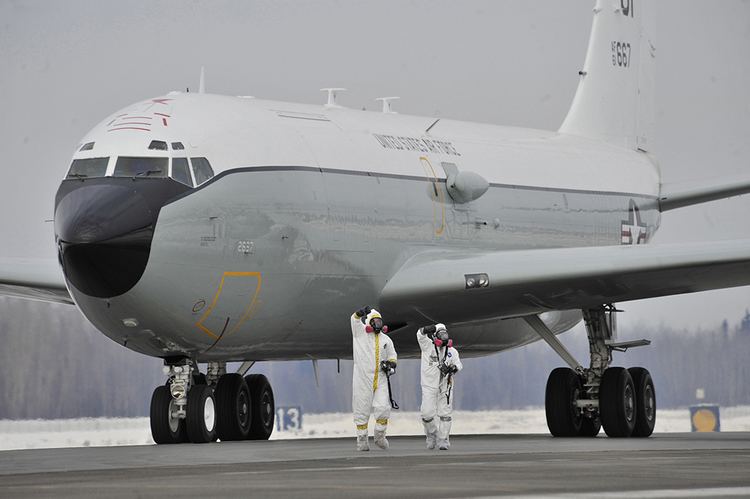 | ||
The WC-135 Constant Phoenix is a special purpose aircraft derived from the Boeing C-135 and used by the United States Air Force. Its mission is to collect samples from the atmosphere for the purpose of detecting and identifying nuclear explosions. It is also informally referred to as the "weather bird" or "the sniffer" by workers on the program.
Contents
- Operational history
- Mission
- Features
- Vela Incident
- Pakistan India
- North Korea
- Japan
- Arctic
- Operators
- Specifications
- References

Operational history
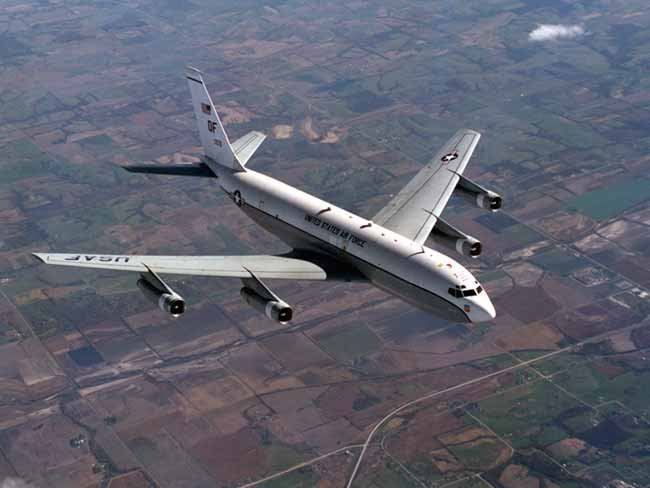
The WC-135 was introduced in December 1965, replacing Boeing WB-50 aircraft in the weather-reconnaissance and air-sampling mission. Ten aircraft were initially converted from C-135B transport aircraft, and were placed in service with the 55th Weather Reconnaissance Squadron at McClellan Air Force Base, California, with the Military Airlift Command (MAC). Detachments were located at various bases throughout the United States and worldwide. The aircraft occasionally took on other roles throughout their careers; several aircraft were temporarily assigned to the 10th Airborne Command and Control Squadron at RAF Mildenhall in the late 1980s and early '90s as training aircraft so that the unit could reduce the accumulation of flight hours on its EC-135Hs, while others served as staff transports on an as-needed basis.
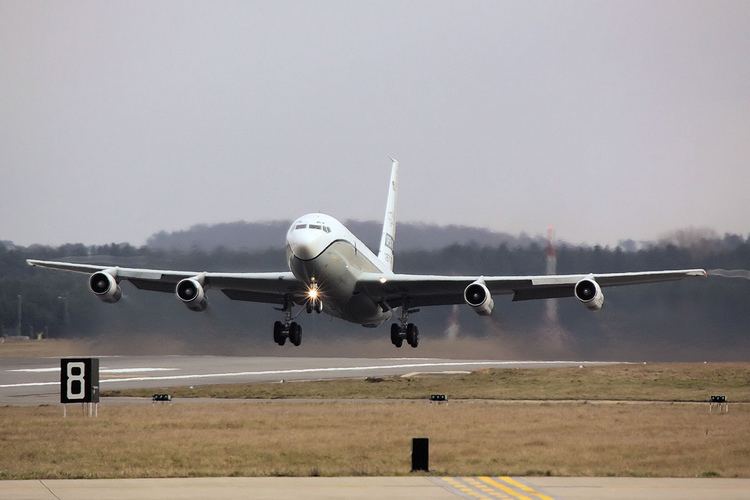
While most aircraft were placed into storage in the early 1990s, three were retained for further use. Serial no. 61-2666 was converted to an NC-135, and remains in service as a testbed for RC-135 equipment upgrades. Serial no. 61-2667 was upgraded to a WC-135W, given the project name Constant Phoenix, and remains in service with the 45th Reconnaissance Squadron at Offutt Air Force Base, Nebraska. Serial no. 61-2674 was converted to the first OC-135B Open Skies observation aircraft, reentering service in 1993. It was later stored in 1997 and replaced with two additional aircraft.
In 1998, a former EC-135C, serial no. 62-3582, was converted into a WC-135C, also designated Constant Phoenix.
Mission
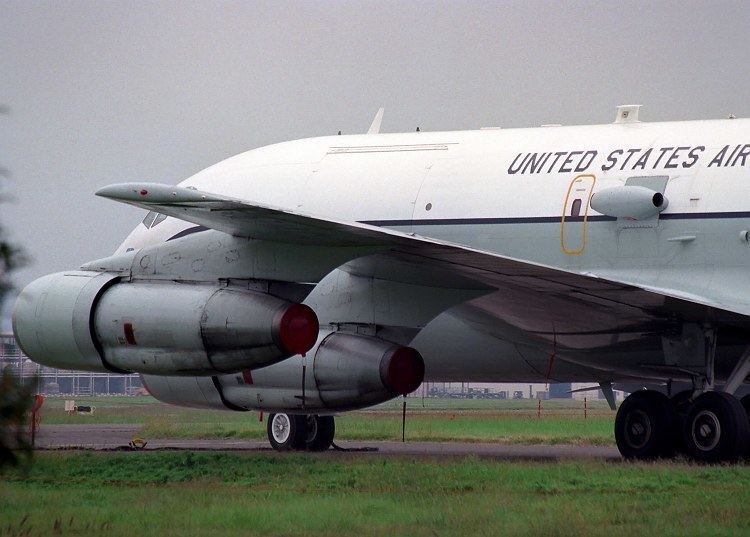
The WC-135C and WC-135W Constant Phoenix atmospheric collection aircraft support national level intelligence consumers by collecting particulate debris and gaseous effluents from accessible regions of the atmosphere in support of the Limited Nuclear Test Ban Treaty of 1963.
Features

The Constant Phoenix’s modifications are primarily related to the aircraft's on-board atmospheric collection suite, which allows the mission crew to detect radioactive debris "clouds" in real time. The aircraft is equipped with external flow-through devices to collect particulates on filter paper and a compressor system for whole air samples collected in high-pressure holding spheres. Despite the different designations, both the C and W carry the same mission equipment (similar to the RC-135V and W aircraft).
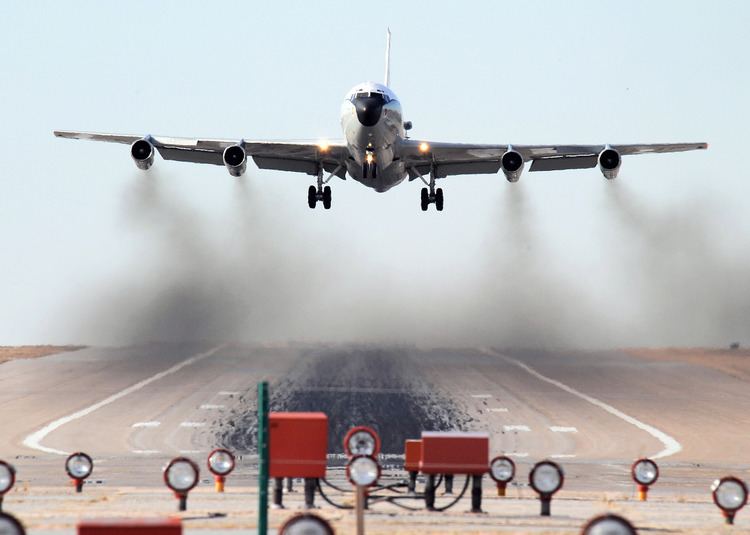
The interior seats 33 people, including the cockpit crew, maintenance personnel, and special equipment operators from the Air Force Technical Applications Center. On operational sorties, the crew is minimized to just pilots, navigator, and special equipment operators, to reduce radiation exposure to mission-essential personnel only.
Vela Incident
WC-135B aircraft flew 25 sorties in 1979 to try to ascertain if a double flash in the south Atlantic that was detected by a Vela satellite was a nuclear weapons test, however the result was inconclusive.
Pakistan & India
The Constant Phoenix aircraft was used to gather information on the nuclear tests conducted by Pakistan and India in 1998.
North Korea
On October 6, 2006 Japan's Kyodo News agency reported that a US military aircraft, equipped to detect radiation from a nuclear test, took off from southern Japan. This was believed to be part of US efforts to prepare to monitor a North Korean nuclear test.
On October 9, 2006 North Korea's official Korean Central News Agency (KCNA) reported that the country had performed a successful underground nuclear test.
On October 13, 2006 CNN reported: "The U.S. Air Force flew a WC-135 Constant Phoenix atmospheric collection aircraft on Tuesday to collect air samples from the region. A preliminary analysis of air samples from North Korea shows "radioactive debris consistent with a North Korea nuclear test," according to a statement from the office of the top U.S. intelligence official. The statement, from the office of Director of National Intelligence John Negroponte, was sent to Capitol Hill but not released publicly. CNN obtained it from a congressional source. The national intelligence office statement said the air samples were collected Wednesday, and analysis found debris that would be consistent with a nuclear test "in the vicinity of Punggye" on Monday. The South Korean Defense Ministry told CNN that the United States has informed it that radioactivity has been detected." The aircraft was based at Offutt AFB, and was sent to Kadena Air Base on Okinawa to operate during the sampling missions.
On June 17, 2009 JoongAng Daily reported, in reference to a purported May 25 nuclear test by North Korea: "The U.S. Air Force twice dispatched a special reconnaissance jet, the WC-135 Constant Phoenix from Kadena Air Base in Okinawa, Japan, to collect air samples."
On November 23, 2010 Sankei Shimbun reported that a WC-135 had been moved to Kadena Air Base in September 2010, in anticipation of a North Korean nuclear test.
On January 31, 2013 the WC-135W was reported to be conducting surveillance flights out of Kadena Air Base in anticipation of another North Korean nuclear test.
On January 6, 2016 the United States Air Force confirmed plans to soon deploy the WC-135 to test for radiation near North Korea to examine North Korea's claim that they had successfully conducted a Hydrogen-bomb test on January 5 (EST).
On September 8, 2016, it was reported that the WC-135 would soon begin surveillance flights near the Korean Peninsula after South Korean officials confirmed that North Korea conducted its fifth nuclear test at approximately 0:30 UTC.
Japan
On March 17, 2011 CNN reported that the WC-135W had been deployed from Offutt Air Force Base to assist in detecting radioactive materials in the atmosphere around Japan, monitoring radioactivity released from the Fukushima I Nuclear Power Plant caused by the magnitude 9.0 earthquake and subsequent tsunami of March 11, 2011.
Arctic
On February 17, 2017, it was reported that the WC-135C had been deployed to Europe. It was conjectured that this came in response to several reports of anomalous levels of iodine-131 coming from the Arctic.
Operators
United States Air Force - Air Combat Command
Specifications
General characteristics
Performance
Armament
